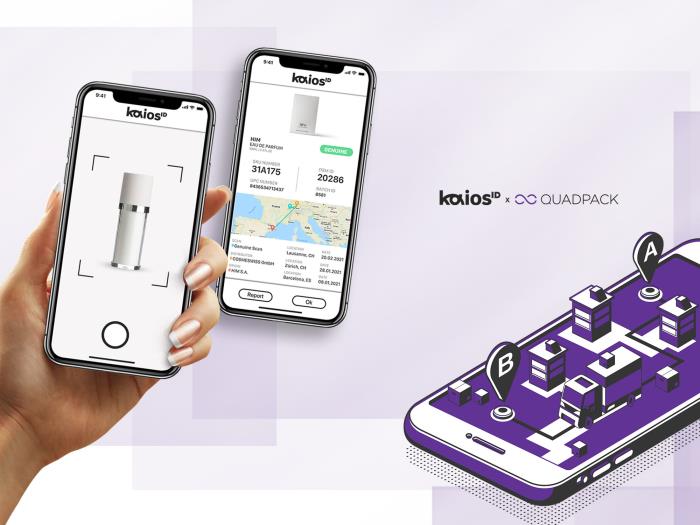The future of packaging: connected, personalised and sustainable
Connected packaging helps brands communicate with consumers and protect their products from counterfeiting
Packaging has been an efficient communication tool for brands since pre-digital times, but generational and technological changes are posing new challenges to the industry. While young consumers demand more information, faster and delivered in a sustainable way, brands’ communications efforts are endangered by counterfeiting, an ongoing issue that has evolved with new technologies. Connected packaging has emerged as a solution to these new concerns, propelled by the trend towards digitalisation.
In a new series about the future of packaging, Quadpack invites experts to talk about trends and solutions that are changing our business, sharing knowledge with our stakeholders. First up is Johan Wüthrich, CEO and founder of KaiosID, a Swiss-based company that provides an invisible product identification solution to safeguard products, brands and connect with consumers by the scan of a connected packaging with a smartphone.
What is connected packaging?
It’s a technology that use different solutions such as QR Codes, barcodes or image recognition to give a digital identity to each product. It’s often connected to an app that provides information about the brand and the product itself to consumers, enhancing communication while delivering relevant data for both sides. Connected packaging is also an important tool for brand protection, traceability and the combat against counterfeiting.
How are the main concerns beauty businesses have regarding brand protection?
With the rise of e-commerce and digitalisation, businesses have struggled with counterfeiting and controlling if their products are being sold through unauthorised channels or diverted from their intended market. Also, copycats are improving their quality’s work, making it difficult for the consumer to tell the difference between fake and real. Another important challenge is getting information about consumers profile and behaviours. Many brands use third-party channels to sell their products, and they often can’t get data from these platforms.
How does connected packaging help?
Connected packaging enables effective brand authentication. It allows consumers to verify its origins to combat counterfeiting. It also provides information about the product, such as where it was made and destination markets. It also helps brands connect with them and provide increasingly customised solutions. For consumers, it provides transparency and more information in less time, in a sustainable way. You do not need a printed leaflet or instructions anymore; all the information you need is online and personalised to your profile and interests.
How can connected packaging enhance beauty brands recovery in a post-pandemic world?
When you think about new generations’ concerns before COVID-19, they were very engaged with sustainability, ethical responsibility and the values behind a brand’s products. They wanted to feel connected with brands, but in a dynamic way, considering their short attention span. These concerns are still there, but now there’s an increased interest in ingredients, health & safety and the effects of a product on their wellbeing. With the restrictions to physical shopping, brands need to deliver a powerful message and inspire loyalty, and they can do that through digital content and a data-based, customised experience. Connected packaging won’t bring the full experience back, but it unlocks a new world of infinite possibilities.
What is the future of beauty packaging?
The future lies in sustainability. Brands are adopting recyclable, reusable packaging made with renewable or biodegradable materials. They are also reducing packaging and, in doing so, having less ‘physical’ space to provide information. Connected packaging is a big help to communicate about the brand’s sustainability efforts and give all the information that is not printed on the pack itself, including what to do with the product when it’s finished and the location of the nearest refilling stations. Recycling can now be fun, understandable and rewarded.
